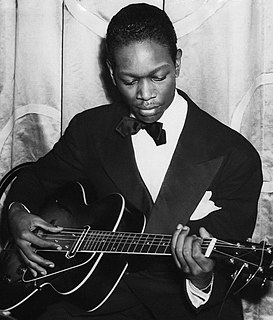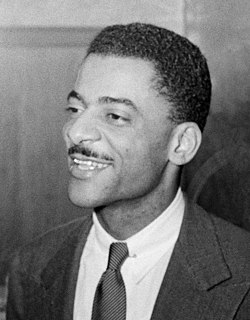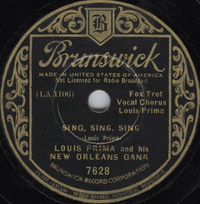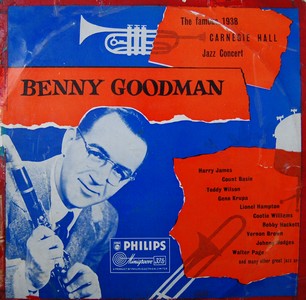
Arthur Francis Rollini (born February 13, 1912 in New York City; died December 30, 1993 in Florida) was an American jazz musician who played the tenor saxophone, flute and clarinet. His nickname was "Schneeze".

Arthur Francis Rollini (born February 13, 1912 in New York City; died December 30, 1993 in Florida) was an American jazz musician who played the tenor saxophone, flute and clarinet. His nickname was "Schneeze".
Rollini came from an Italian descent musical family and grew up in Larchmont, New York. [1] Multi-instrumentalist Adrian Rollini was his older brother.
In 1929 he played in England for Fred Elizalde and worked for the California Ramblers and big band pioneer Paul Whiteman.
From 1934 to 1939 he was a member of the Benny Goodman Orchestra. The highlight of that period was a breakout performance for big band jazz at Carnegie Hall in 1938. He worked with Richard Himber and from 1941-1942 with Will Bradley. From 1943 to 1958 he worked as a studio musician for the American Broadcasting Company. [1]
Rollini's work can be found on recordings with the bands of Wingy Manone, Adrian Rollini (1933–34), Benny Goodman, Joe Venuti (1935), Lionel Hampton (1937), Harry James (1938), Louis Armstrong (1945) and Brad Gowans (1946). In 1939, he starred in an Allstar band of Goodman, Bunny Berigan and Jack Teagarden with ("Blue Lu"). [1]
In 1987, he published his autobiography Thirty Years With the Big Bands. [1]
Rollini met Ena Kelsall, daughter of actor and entertainer Greg Kelsey, in 1932. They married on November 25, 1935. They had a daughter Adrienne in 1938 and a son Arthur, Jr. in 1941. [1] [2]

Benjamin David Goodman was an American jazz clarinetist and bandleader known as the "King of Swing".

Charles Henry Christian was an American swing and jazz guitarist.
Swing music is a form of jazz that developed in the United States in the 1930s and 1940s. The name came from the emphasis on the off–beat, or weaker pulse. Swing bands usually featured soloists who would improvise on the melody over the arrangement. The danceable swing style of big bands and bandleaders such as Benny Goodman was the dominant form of American popular music from 1935 to 1946, known as the swing era. The verb "to swing" is also used as a term of praise for playing that has a strong groove or drive. Notable musicians of the swing era include Duke Ellington, Benny Goodman, Count Basie, Cab Calloway, Jimmy Dorsey, Tommy Dorsey, Woody Herman, Harry James, Lionel Hampton, Glenn Miller and Artie Shaw.

Harry Haag James was an American musician who is best known as a trumpet-playing band leader who led a big band from 1939 to 1946. He broke up his band for a short period in 1947 but shortly after he reorganized and was active again with his band from then until his death in 1983. He was especially known among musicians for his technical proficiency as well as his tone, and was influential on new trumpet players from the late 1930s into the 1940s. He was also an actor in a number of films that usually featured his band.

Irving Milfred Mole, known professionally as Miff Mole was a jazz trombonist and band leader. He is generally considered one of the greatest jazz trombonists and credited with creating "the first distinctive and influential solo jazz trombone style."
John Henry Hammond II was an American record producer, civil rights activist, and music critic from the 1930s to the early 1980s. In his service as a talent scout, Hammond became one of the most influential figures in 20th-century popular music. He is the father of famous blues musician John P. Hammond.

Theodore Shaw Wilson was an American jazz pianist. Described by critic Scott Yanow as "the definitive swing pianist", Wilson had a sophisticated, elegant style. His work was featured on the records of many of the biggest names in jazz, including Louis Armstrong, Lena Horne, Benny Goodman, Billie Holiday, and Ella Fitzgerald. With Goodman, he was one of the first black musicians to appear prominently with white musicians. In addition to his extensive work as a sideman, Wilson also led his own groups and recording sessions from the late 1920s to the 1980s.

Adrian Francis Rollini was an American jazz multi-instrumentalist who played the bass saxophone, piano, vibraphone, and many other instruments. Rollini is also known for introducing the goofus in jazz music. As leader, his major recordings included "You've Got Everything" (1933), "Savage Serenade" (1933) and "Got The Jitters" (1934) on Banner, Perfect, Melotone, Romeo, Oriole, "A Thousand Good Nights" (1934) on Vocalion, "Davenport Blues" (1934) on Decca, "Nothing But Notes", "Tap Room Swing", "Jitters", "Riverboat Shuffle" (1934) on Decca, and "Small Fry" (1938) on Columbia.
Leon Brown "Chu" Berry was an American jazz tenor saxophonist during the 1930s.

"Sing, Sing, Sing " is a 1936 song, with music and lyrics by Louis Prima, who first recorded it with the New Orleans Gang. Brunswick Records released it on February 28, 1936 on the 78 rpm record format, with "It's Been So Long" as the B-side. The song is strongly identified with the big band and swing eras. Several have performed the piece as an instrumental, including Fletcher Henderson and, most famously, Benny Goodman.

Jesse Alexandria Stacy was an American jazz pianist who gained prominence during the swing era. He is perhaps best known for his years with the Benny Goodman band during the late 1930s, particularly his performance at Goodman's Carnegie Hall concert in 1938.

The Famous 1938 Carnegie Hall Jazz Concert by Benny Goodman, Columbia Records catalogue item SL-160, is a two-disc LP of swing and jazz music recorded at Carnegie Hall in New York City on January 16, 1938. First issued in 1950, the landmark recording captured the premiere performance given by a big band in the famed concert venue. The event has been described as "the single most important jazz or popular music concert in history: jazz's 'coming out' party to the world of 'respectable' music." Both critical and public reception of the performances was outstanding.
Murray McEachern was a Canadian jazz trombonist and alto saxophonist born in Toronto, perhaps best known for having played trombone for Benny Goodman from 1936 to 1937. McEachern is equally remembered for playing both the trombone and alto saxophone for the Casa Loma Orchestra from 1937 to 1941.
Benny Heller was a jazz rhythm guitarist who is known for his work with Benny Goodman. He won a Down Beat Readers' Poll in 1938 and 1940.
David Michael Barbour was an American jazz guitarist. He was married to singer Peggy Lee and was her co-writer, accompanist, and bandleader.

Richard "Dick" Tobin McDonough was an American jazz guitarist and banjoist. Perhaps best known for his duets with fellow guitarist Carl Kress, McDonough appeared on numerous record sessions and radio broadcasts throughout the 1920s and 1930s.
Michael Neely Bryan was an American jazz guitarist.
Paul J. Ricci was an American jazz reedist.
Joseph P. Lippman was an American composer, arranger, conductor, pianist, and songwriter working in jazz and traditional pop. His musical career was over five decades long, having started at age 19 with the Benny Goodman orchestra in 1934 and writing for television, films, and Broadway in the 1980s. He composed and arranged for Bunny Berigan, Jimmy Dorsey, Sarah Vaughan, Charlie Parker and worked as staff arranger in television for Perry Como and Hollywood Palace.